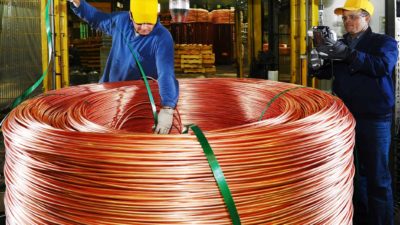The BHP Group Ltd (ASX: BHP) share price closed 5.6% lower today and it's down 8.5% in July so far. Is it time to be looking at BHP, and what's the outlook for the company in July?
As one of the world's biggest resource businesses, changes in commodity prices can have a big impact on the company's shorter-term profit prospects and investor sentiment.
BHP's commodity portfolio is a bit smaller after the company divested its oil and gas segment to Woodside Energy Group Ltd (ASX: WDS). As such, it's not suffering from the collapse of the oil price right now amid concerns of the world entering into a recession.
After that divestment, BHP has a portfolio comprising iron ore, copper, coal, and potash.
But, some of these commodities aren't doing so well either. The copper price is at a 19-month low while the iron ore price has fallen by more than US$20 per tonne since the start of June.
Why do commodity prices matter for the BHP share price?
BHP is a price-taker business. In other words, whatever price iron ore or copper are currently trading at is generally the price that BHP can sell its resources for.
It typically costs BHP the same amount of money to extract the resource out of the ground, whether the commodity is priced $50 per tonne higher or $50 per tonne lower.
If the costs are largely fixed, higher revenue can largely go straight to BHP's net profit after tax (NPAT) in its financial accounts (except for things like company tax, which would rise too).
Larger profits can also lead to big dividend payments as well.
However, the reverse is true when resource prices fall. When commodity prices fall, it largely gets wiped off the NPAT. Dividends can quickly get reduced as well.
So, getting back to the situation for the iron ore price – which is the key profit generator for BHP – the iron ore price has reduced 15% since the beginning of June to the mid-US$110s per tonne.
What do brokers think of the BHP share price?
While Macquarie's pick of the major miners is BHP, it has just cut its profit expectations because of the lower commodity prices. Even so, Macquarie's price target is $50, suggesting a possible rise of around 30% in the next year.
Other brokers are less optimistic.
For example, Morgan Stanley is 'equal-weight' on the business, which is similar to a 'hold' rating. Its price target is $40.05, suggesting a mid-single-digit rise.
The broker Ord Minnett rates the business as 'hold' with a price target of $44. That implies a mid-teen rise for the ASX mining share. It notes the lower resource prices, which is why it reduced its price target slightly.









